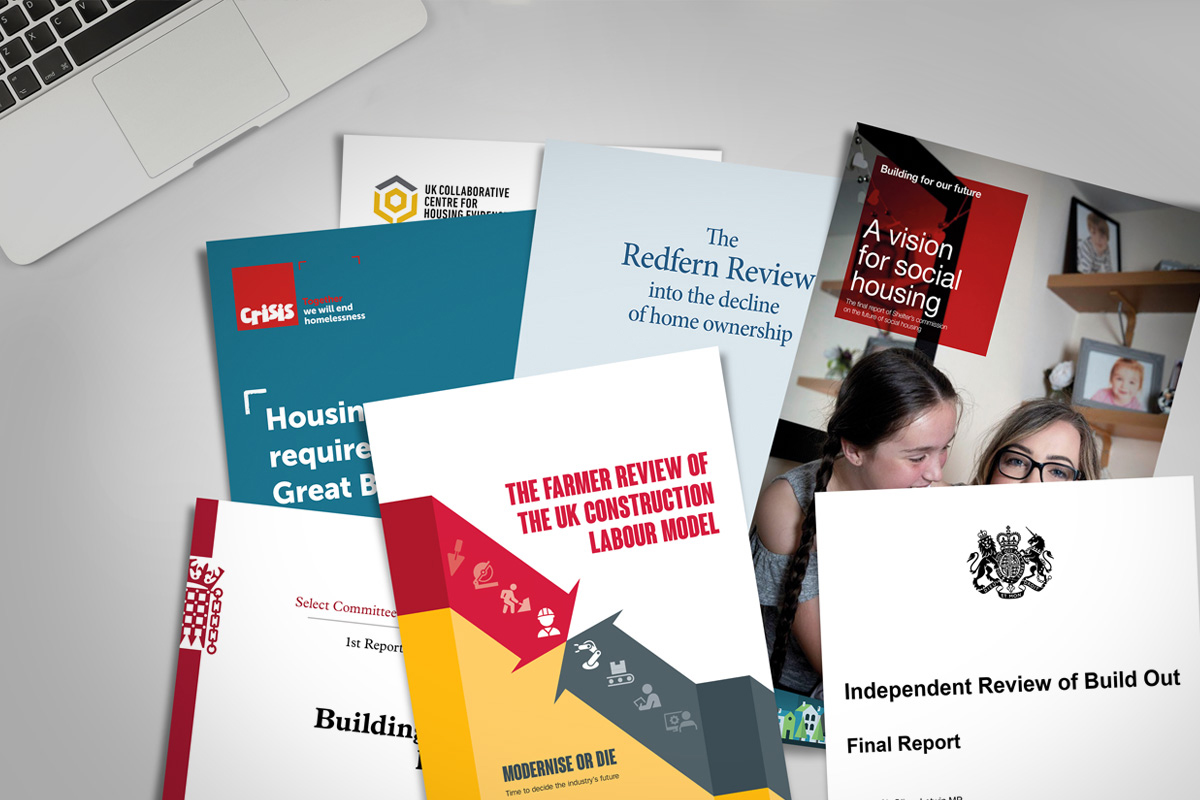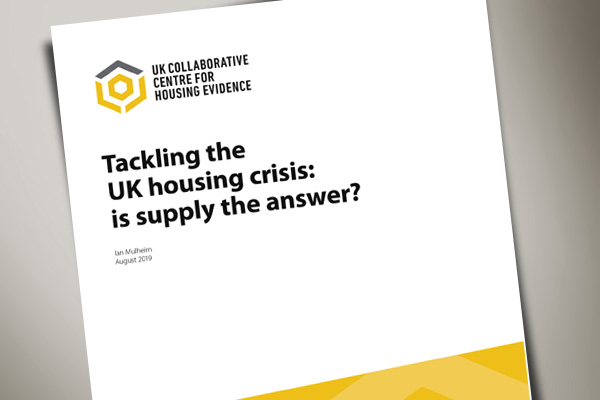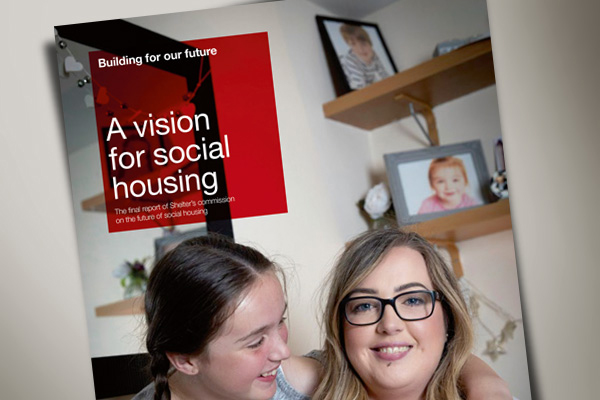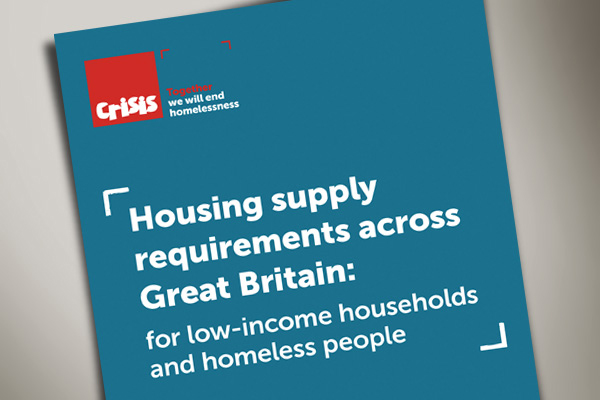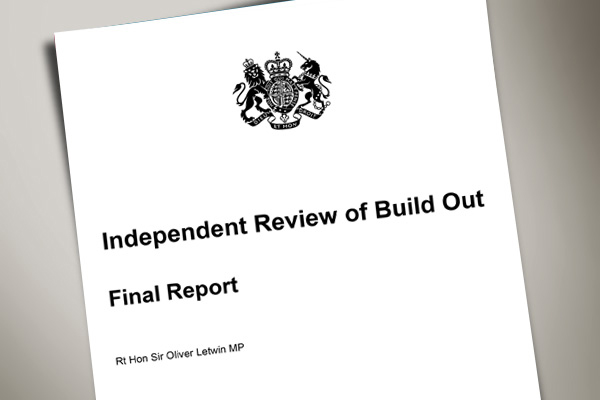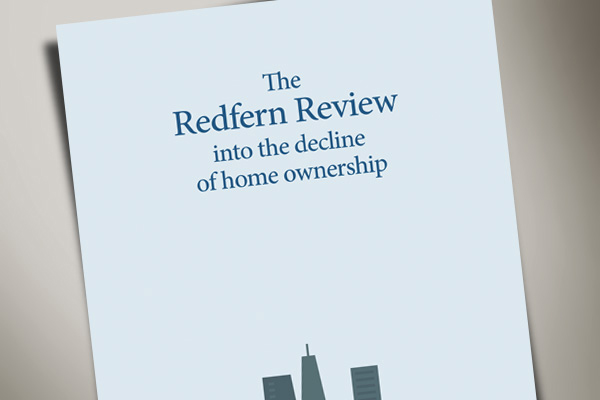You are viewing 1 of your 1 free articles
How to solve the housing crisis: what the recent major reports have recommended
After the Tony Blair Institute for Global Change’s claim that increasing supply is not the solution to the housing crisis, Peter Apps looks back at what other recent major reports have said (main image: Getty)
Last week the Tony Blair Institute caused ripples of discontent in some parts of the housing sector by publishing a report suggesting that increasing the supply of new homes is not the way to solve the country’s housing crisis.
It was the latest in a run of recent weighty reports which have grappled with that question or a similar one: how do we solve the housing crisis, and if supply is the answer, how do we build more homes?
Here, with thanks to the Thinkhouse library of housing reports, we run through a quick guide to the recent major reports and what they have said.
Tackling the UK housing crisis: is supply the answer? (August 2019)
Published by: Tony Blair Institute for Global Change, a thinktank set up by the former prime minister aimed at “making globalisation work for the many, not the few”.
What it said: Written by Ian Mulheirn, executive director and chief economist of renewing at the Tony Blair Institute, the report identified a familiar problem: UK average house prices have risen 160% since 1996 and homeownership is at its lowest ebb in a generation. Its conclusion, though, is less orthodox, namely that “the current policy focus on boosting supply does not offer a solution to the housing crisis and a fundamental rethink is badly needed”.
The reasoning starts from the fact that, despite historically low levels of housing supply, the number of new homes being built has comfortably outstripped household formation since 1996. The report also cites the fact that the growth in house prices is regional: it is London and the “Greater South East” which has seen rapid rises since the financial crisis, with much of the rest of the country remaining stagnant.
This is reflective of other major cities, writes Mr Mulheirn, and is more likely a result of “global investor demand” than a lack of supply. He writes that lifting supply to the government’s target of 300,000 a year would not have a meaningful impact – prices would be likely to drop by a mere 10% over 20 years.
Instead, he calls for a policy focus on things such as “slow wage growth for young people, erosion of the social housing stock, and housing benefit cuts” as well as support for first-time buyers and higher taxes for landlords to encourage them to sell.
Building for our future: a vision for social housing (January 2019)
Published by: Shelter, a homelessness charity
What it said: The review of the social housing sector by Shelter’s affordable housing commission was established in the aftermath of the Grenfell Tower fire and was wide-ranging in its recommendations for reform. But it had plenty to say on housebuilding, identifying a massive increase in social housing development as “the only credible hope that government has of reaching its target of 300,000 new homes a year”.
The commission, which included Grenfell survivors and former Labour leader Ed Miliband, produced a ‘cost benefit’ case for more social housing and set out some policy reforms that could help achieve it.
These included land reforms aimed at reducing the cost of land for social housing, tighter rules for private builders about the amount of social housing required in schemes, and investment from government in socially rented housing.
Housing supply requirements across Great Britain: for low-income households and homeless people (November 2018)
Published by: Crisis, a homelessness charity, and housing association body the National Housing Federation
What it said: This joint report also found a pressing need for new homes: specifically 4.75 million households across Great Britain, including 330,000 who were homeless and 510,000 who live in poverty as a result of the cost of their housing. It said the way to address this was to lift housebuilding to 380,000 homes a year across Britain – with 340,000 required in England. Pertinently, and in contrast to some other supply-focused reports, it said 100,000 of these should be social rent homes, as well as 29,000 shared ownership and 33,500 intermediate rent properties. Most of these (90,000 of the socially rented, 25,000 of the shared ownership and 30,000 of the intermediate rent) were required in England, the report said.
These numbers are vastly below what is currently delivered in England – with supply sitting at 6,434 social rented homes and 12,546 for shared ownership for 2017/18, among an overall number of 47,124 affordable homes – close to a third of what the report suggested was required.
It also threw down a gauntlet to government which, despite some shifts by Theresa May, directs the overwhelming majority of affordable housing funding to shared ownership or intermediate and affordable rents. It was cautious to note that additional measures such as homelessness prevention and reversing welfare cuts were required to substantially reduce homelessness numbers.
Independent review of build out (October 2018)
Published by: Ministry of Housing, Communities and Local Government, with the review carried out by Sir Oliver Letwin
What it said: During the Autumn Budget in 2017, then-chancellor Philip Hammond announced this review to be carried out by backbencher Sir Oliver. The aim was to investigate a common allegation that floats around in housing policy: land banking. Essentially, Sir Oliver was tasked with assessing why developers sometimes take decades to turn plots of consented land into actual homes and what the government could do about it.
His central findings were clear and unambiguous: the problem was “homogeneity of tenure”. In other words, building a large site entirely for market sale made the build-out rate reliant on how many homes could be sold in the local market at once. It would be a very foolish builder which took 10,000 homes for private sale to market on the same day. But at the same time, the money flowing through from sales is necessary to build the rest.
Sir Oliver’s conclusions were equally clear: a greater diversity of tenure was required on large sites. He said government should make support for schemes of more than 1,500 homes – including support for buyers through Help to Buy – conditional on the builder accepting a locally designed tenure mix. In practice, Sir Oliver was essentially calling for more affordable housing and more homes to rent.
The Redfern Review into the decline of homeownership (November 2016)
Published by: John Healey, shadow housing secretary, commissioned the report, which was published by a panel chaired by Pete Redfern, chief executive of major house builder Taylor Wimpey
What it said: The report had a hefty panel of experts contributing, including Dame Kate Barker, who published the seminal housing report of the 2000s in 2004, and Mr Mulheirn, who would go on to author the aforementioned Tony Blair Institute document.
Perhaps unsurprisingly, given Mr Mulheirn’s involvement, it reached a similar conclusion: tumbling rates of homeownership were a consequence of generational inequality, not a lack of housing supply.
In terms of why homeownership was falling, it cited three principle causes: tighter mortgage requirements after the financial crisis, rising house prices, and stagnating incomes among the younger generation. Following the same logic as the Tony Blair Institute report, it called the idea that low supply had caused high house prices “a misleading view”.
It said low homeownership rates would stabilise eventually and politicians should “accept this short-term reality” while doing more to “to provide a healthy and stable renting environment”.
It also called for a long-term, multi-tenured strategy which cuts across political dogmas and government stepping outside this to take short-term action “only when it is necessary to protect the most vulnerable”.
The Farmer Review of the UK construction labour model: modernise or die (October 2016)
Published by: Construction Leadership Council, a collective group of industry leaders from across the construction sector
What it said: Strictly speaking, this was not a review of how to solve the housing crisis but more one about how the construction industry needed to change if it was ever going to deliver the number of homes policymakers have decided we need.
Written by Mark Farmer, founding director and chief executive of Cast Consultancy, the report took a dim view of the current state of play, stating that “many of the features of the industry are synonymous with a sick, or even a dying, patient”.
It diagnosed the problem as threefold: a “survivalist shape” characterised by low reserves and high cyclicality, a “deep-seated cultural resistance to change”, and no strategic incentive to initiate the change necessary to overcome these issues.
In terms of its prognosis, the report did not mince its words. It described the industry as at “a critical crossroads in terms of its long-term health” and warned that “the prognosis for the industry, if action is not taken quickly, is that it will become seriously debilitated”.
The major answer was new technology. The report encouraged the industry to “embrace this trend at scale” in order “to improve productivity and offset workforce shrinkage”. It also noted the power of state-funded social housing to provide a “soft landing” should the private market crash.
But – three years on from publication – with social housing funding continuing to bump along at a near record low and offsite manufacturing still very much a developing industry, it appears Mr Farmer’s sharp warnings have not yet been heeded.
Building more homes (July 2016)
Published by: House of Lords’ Economic Affairs Committee, which is considered to be among the most authoritative select committee in Westminster
What it said: The succinctly titled 103-page report accepted with little question the idea that building more homes was necessary in order to turn the tide of falling homeownership and rising affordability pressure – the focus was more on how to achieve this. It did not pull its punches in its assessment of the housing policy of David Cameron’s majority government.
It said a target of 300,000 homes a year was necessary to meet demand – a substantial rise on the government’s pledge of one million homes by 2020, which was the major housing target at the time. An over-reliance on the private sector was criticised and a clear call was made for more borrowing powers for councils to build social rented homes again. It was succinct and devastating in its assessment of Mr Cameron’s focus on homeownership to the exclusion of other housing tenures. “The government’s focus on homeownership neglects other tenures; those on the cusp of ownership are helped and those who need secure, low-cost rental accommodation are not,” it said.
While the report came too late to have any influence on Mr Cameron – by July 2016 he was on his way out of office, having recently lost the referendum on Brexit – it is notable that many of its recommendations, including the fresh target and the dropping of the borrowing cap for councils, were picked up and implemented by his successor Ms May.
The Thinkhouse Early Career Researcher’s Prize 2019
What is it?
Thinkhouse, a website that collates and critiques housing research and provides monthly research reviews for Inside Housing, is now looking for entries to its Early Career Researcher’s Prize.
The prize, which is in its second year and is supported by Inside Housing, aims to give researchers in the early stages of their career “an opportunity to showcase their work to a wide and influential audience”.
It is open to those with up to eight years’ research experience, with or without a PhD, and those working in non-academic as well as academic institutions.
Entries are encouraged from the voluntary sector, thinktanks, housing associations, local authorities and journalists.
Those wanting to enter should submit a piece of research between 4,000 and 8,000 words in length. The panel will consider think pieces, papers reviewing existing evidence and policy analysis or investigative journalism. Journal articles or other papers already published or under review will be accepted.
Thinkhouse’s preference is for research pieces that “cover ways to increase the amount and quality of the UK’s housing stock and the related economic, social and community benefits of doing so” but those with other housing-related research pieces are advised to get in touch.
Papers must be emailed to info@thinkhouse.org.uk by the end of September 2019.
The winner will receive £500 and a year’s Inside Housing subscription. They will also have their award win reported by Inside Housing and their paper published on the Thinkhouse website.
The judges will focus on the following areas:
- Writing style/clarity
- Engagement with literature and theory
- Methods
- Empirical rigour/theoretical depth
- Strength of conclusions
- The extent of how the research is outcome and impact-focused so that it contributes to useful knowledge exchange
- The scalability of the research (ie the scope to make a widespread difference)
Who is on the judging panel?
- Stephen Aldridge, director for analysis and data, Ministry of Housing, Communities and Local Government
- Carl Brown, head of engagement, Inside Housing
- Professor Phil Brown, professor of social policy, University of Salford
- Professor Ken Gibb, director, CaCHE
- Richard Hyde, founder and editorial panel chair, Thinkhouse
- Anya Martin, winner of the Early Career Researcher’s Prize 2018
- Steve Moseley, group director of governance, strategy and communications, L&Q
- Jennifer Rolison, marketing executive, Altair
